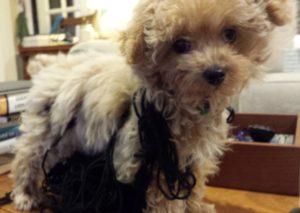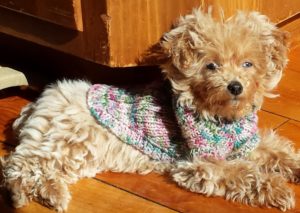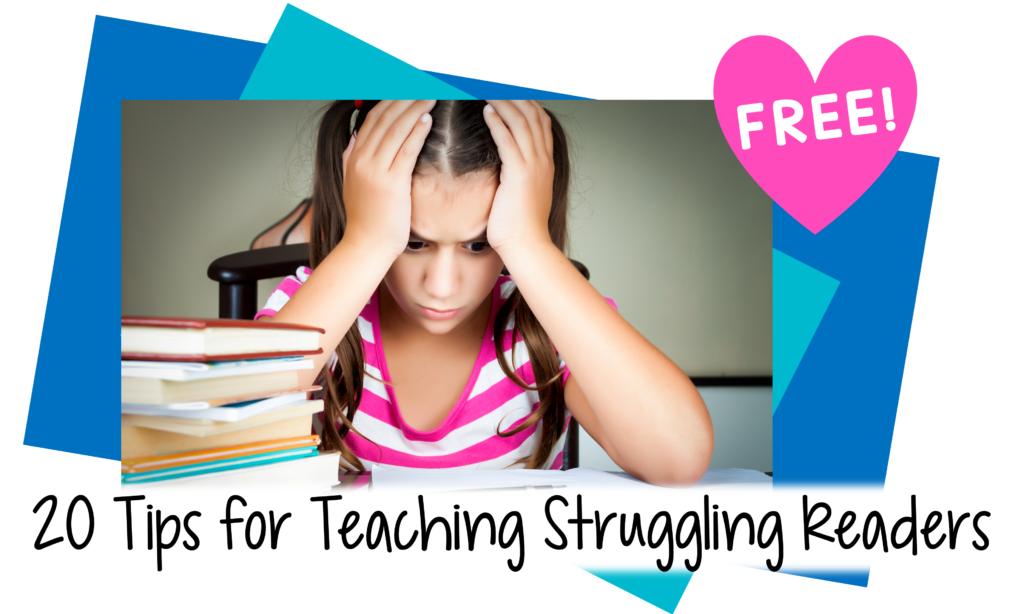
It’s been a while since I posted here, mainly because I’ve been in Puppy Land! Yes, I know: excuses, excuses. But don’t worry! Between working on potty training and basic tricks, I’ve still been thinking about teaching reading.
In fact, I’ve been realizing that my years as a reading specialist are actually helping me train my puppy. Here are 10 teaching maxims I have been applying:
- Be consistent. Puppies do well with a predictable schedule. I am also a firm believer in routines for kids. Classroom and instructional routines build security and confidence in students, allowing them to focus on what is being taught.
- Be kind, but firm. My puppy responds to a warm tone of voice, along with clear boundaries. Similarly, my students know that I care about their well-being, but they also trust me to set clear limits that they can depend on.
- Have some fun. Who knew that puppies have a sense of humor? They love games and surprises. And I love kidding around with my students—teasing them in a developmentally appropriate way (e.g., slapstick for 1st graders and verbal jokes for 2nd graders). All work and no play makes Jack a dull boy.
- You snooze; you lose. Many a time my puppy has had an “accident” or gotten into “trouble” when I had my nose stuck in a cookbook or my phone. The same (well, almost the same) goes for having lessons well-prepared for human students. Teachers well know that, when we come to school without adequate plans, children will fill in the gap in ways we may not like…We must come prepared and stay focused!

- Review, review, review. Puppies learn best in short training sessions repeated throughout the day. The same goes for kids (and adults, too, for that matter!). The brain forms lasting memories from repetition over time.
- Intersperse learning with rest periods. My puppy needs to rest after play time and training sessions. Unfortunately, rest periods and recess are becoming increasingly rare in many schools. When I was a classroom teacher, I made sure to give my students brief rests and exercises periods to break up all that sitting time.
- Positive reinforcement works better than negative reinforcement. It’s true for us adults, isn’t it? Many of us teachers wish our principal would give us more positive feedback. Encouragement and praise work better than punishment with kids and puppies, as well.
- Observe carefully and gradually release responsibility to the students, as they are ready. Just as I continually watch my reading students and adjust my instructional support accordingly, training my puppy involves gradually decreasing reinforcement (fewer treats, greater distance, more distractions), when I feel she is ready.
- Adjust your expectations according to where the child is. Like children, puppies go through developmental stages. We teachers know that we can’t expect our students to perform beyond their developmental level. For example, as emergent readers are learning voice-print matching, I shouldn’t try to teach them fluency. Hmm…I wonder what my puppy will be like as a “teenager”!
- Last, but not least, learning does not take place in a straight line. After a couple of weeks with our puppy, I had taught her 5 tricks and figured that she was completely potty trained. That was easy, or so I thought! Well, as you’ve already guessed, that those accomplishments haven’t been consistent. We’re still working on them a month later. Thankfully, I remembered the teaching adage: learning doesn’t happen in a straight line.

You can see that my background in teaching reading has come in handy during my first weeks of puppy training. (I’ve also become extra grateful that my students can talk!)
Since puppy training and teaching reading are so similar, maybe the next logical step is to teach my puppy to read! Hah!
Please share any ways you have noticed that training a puppy is like teaching.


Leave a Reply